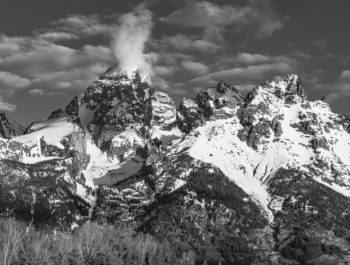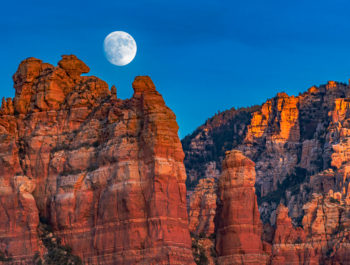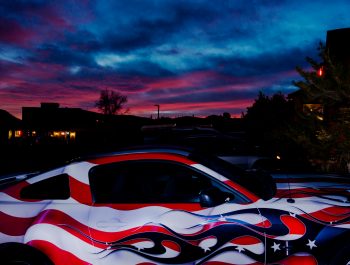Cityscapes: Ideas For The Urban Bound Photographer
A 6 Part Series By Harvey Stearn
For most of my life, I lived in the present with an eye to the future and rarely revisited the past. Now, at 85, I occasionally look back and wonder what I might have done better if I knew then what I know now. Recently, I considered how traveling influenced my photography. My first images were taken in 1951 during a 23-state tour from New York City to California and back. My father had given me a Kodak box camera to record anything that interested me. The only exposures I made were of landscapes and wildlife in the Western National Parks.
That experience ignited my passion for Nature photography as well as for developing negatives and prints in my father’s darkroom that he used for developing X-rays. For the next 46 years, I viewed other subjects as just practice but felt frustrated because wildlife and unspoiled vistas were three to four hours’ drive from the cities in which I worked. In retrospect, I was just into recording and was not yet an artist.
My wife and I moved to Sedona in 2002 to create professional paintings and photographs of Nature, though I often carried and used my cameras for other subjects whenever we traveled. Surprisingly, applying the same principles of composition and lighting to urban scenes and subjects gave me the same joy.
That shouldn’t have been a surprise. After all, successful graphic compositions require a skillful balancing of forms, colors, and tones – regardless of subject. And though I had regarded city living as primarily good for studies and work, I began to see that urban environments are rich in subject matter with graphic content.
My image inventory now includes many cityscapes made on impulse, as they are random byproducts of visiting places of interest. What they have in common is that they are graphic and colorful and often tell stories. They fit a lesser-known branch of photography called “Cityscapes” (which is somewhat different than “Street Photography,” which tends to capture human activity).
I organized this category into the following groups to see if this would be helpful to my readers in selecting locations and material for their own art photography.
- Architecture and Skylines
- Coastal and River Cities
- Local Color
- Major Annual Events
- Parks, Gardens & Public Places
- Urban Wildlife
Following is the first article:
Cityscapes Part I – Architecture & Skylines
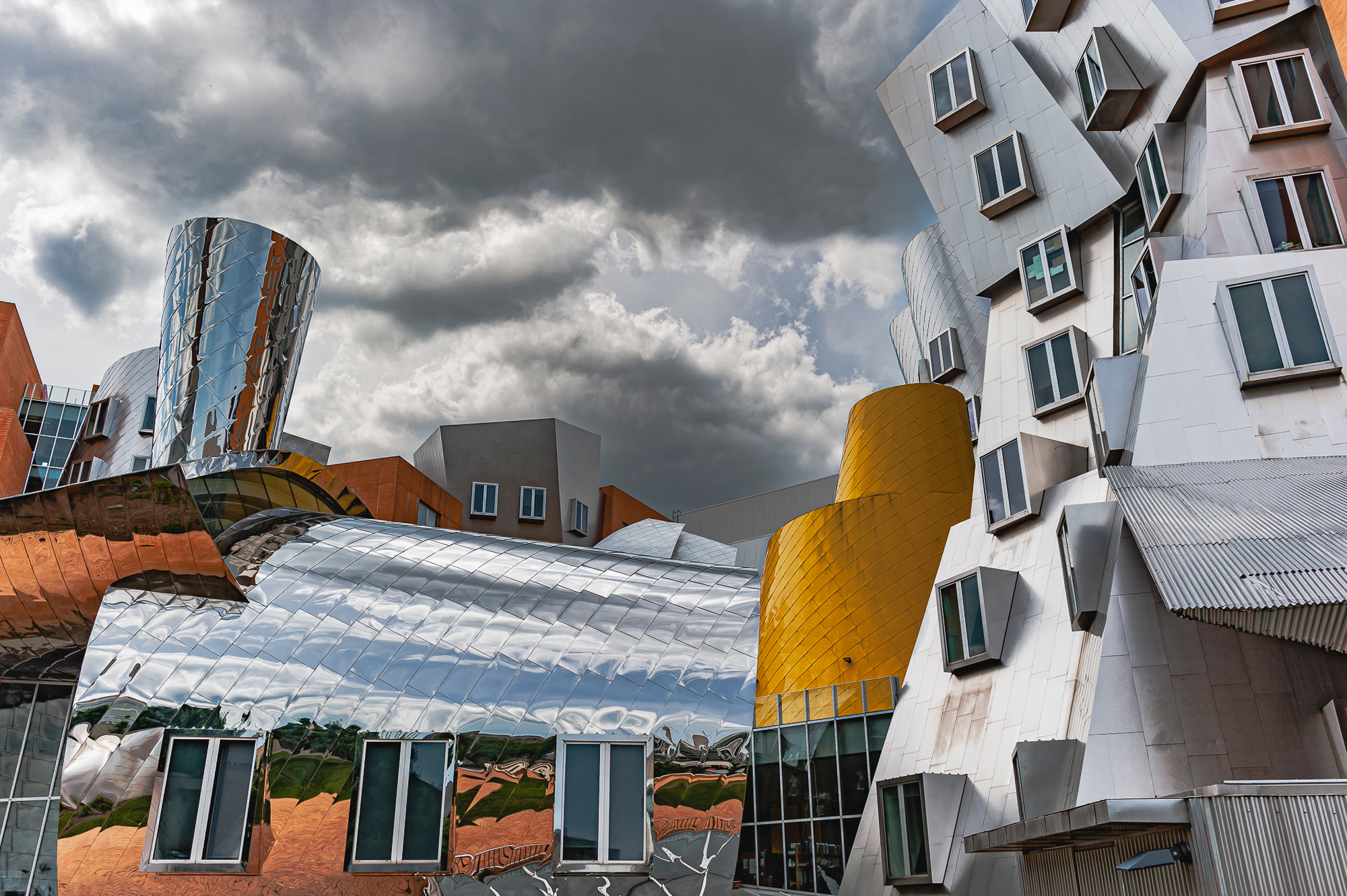
Most likely, the percentage of people who have heard the term “cityscapes” is small. This term usually evokes images of skyscrapers and landmark buildings clustered in major cities. The Manhattan-NY skyline has appeared in many photographs over the years. However, dramatic skylines and modern architecture are also found in dynamic cities all around the world. Cityscapes can also apply to small cities, particularly if they are historic in some sense.
The following 24 images were chosen for their variety and history as well as for their graphic compositions and perspectives. Collectively, their architecture and elements span a period of 2000 years and represent three continents.
Chicago is a prime example of the triumphs and tribulations experienced in large urban areas. It is also a city with a continually changing skyline and a reputation for informative museums, outstanding pizza, violent crime, passionately devoted residents, and many other metrics.
The following four images were taken from a river tour boat, which is the best and easiest means of seeing Chicago’s architecture.
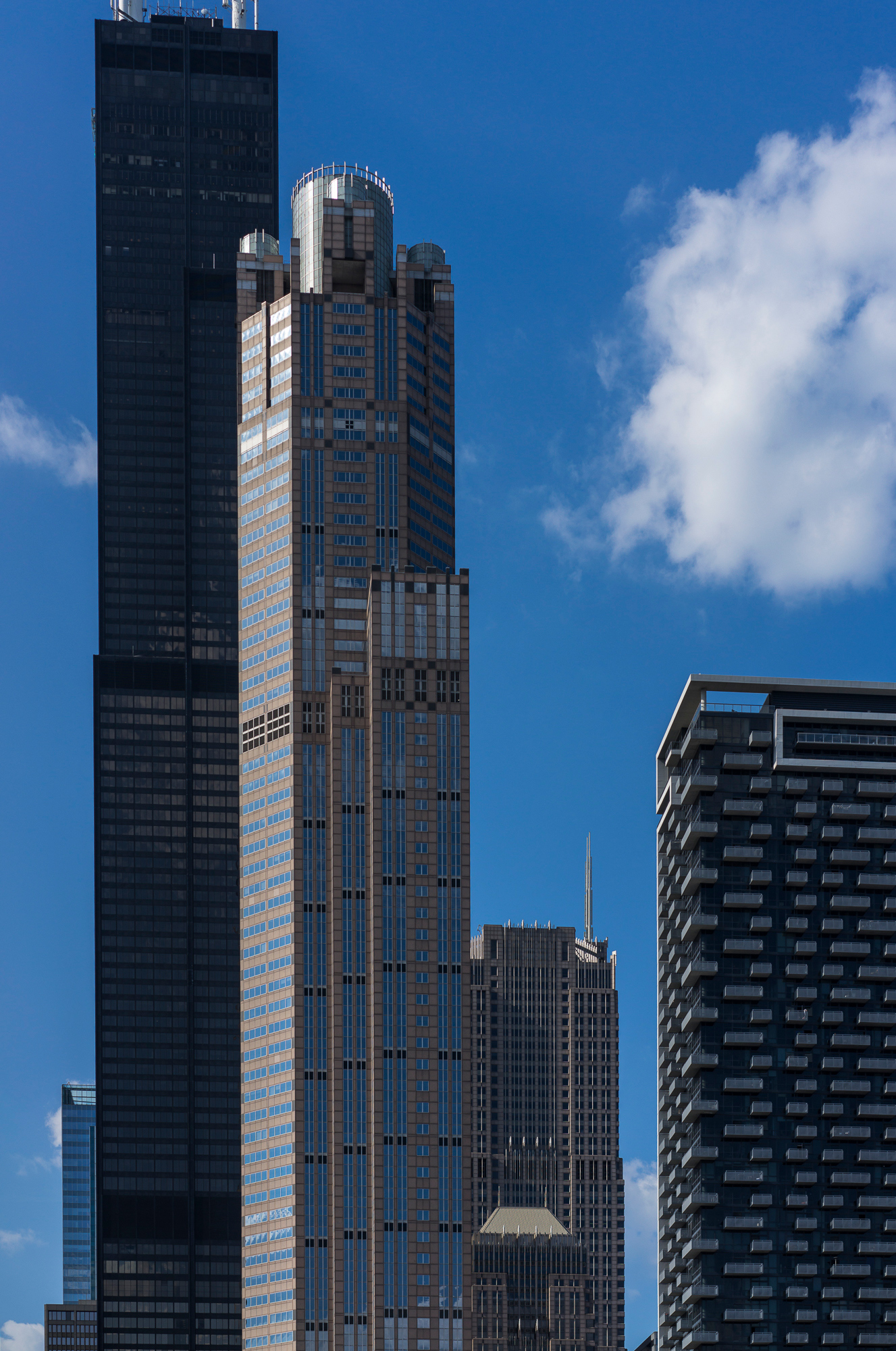
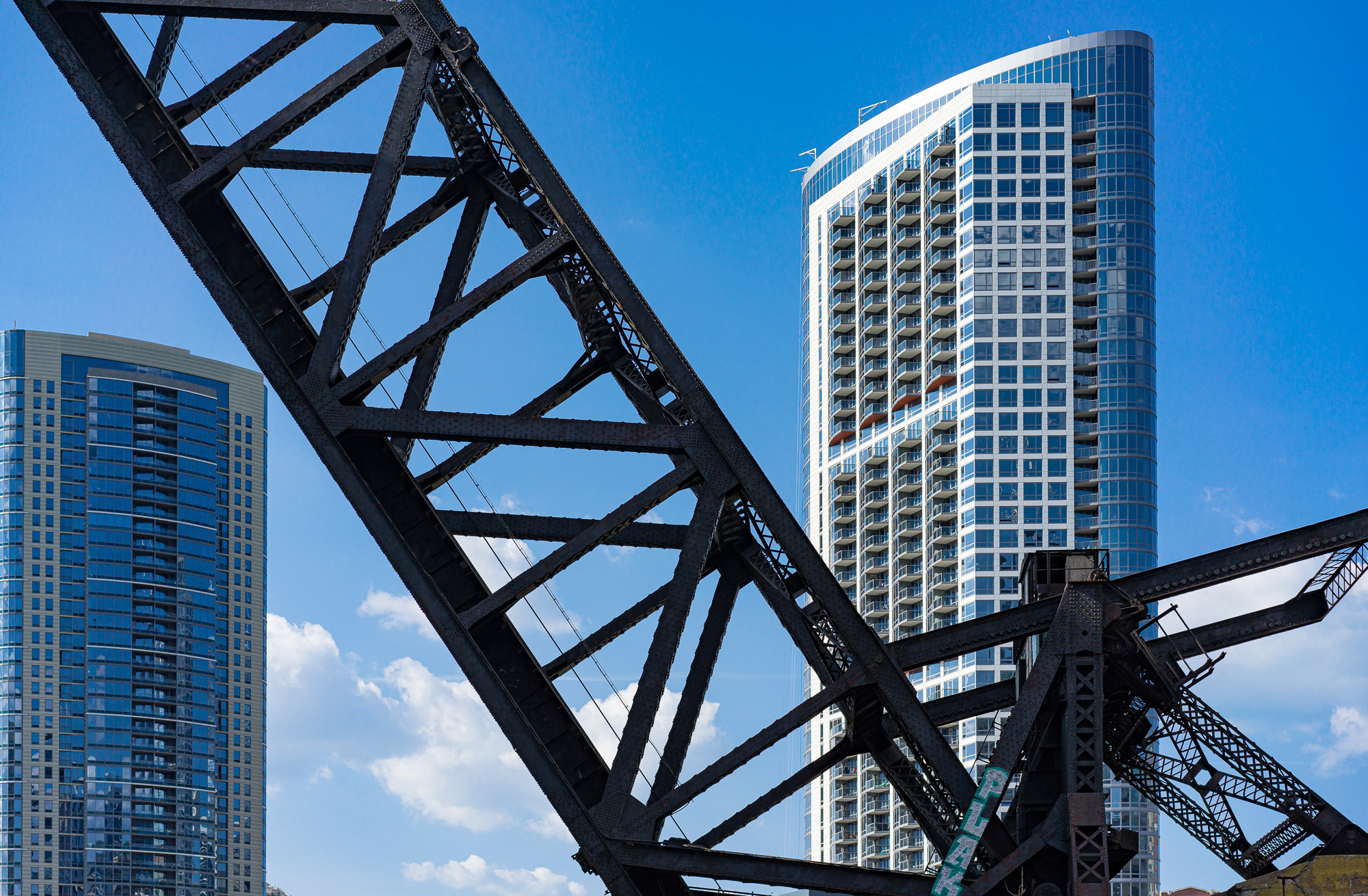
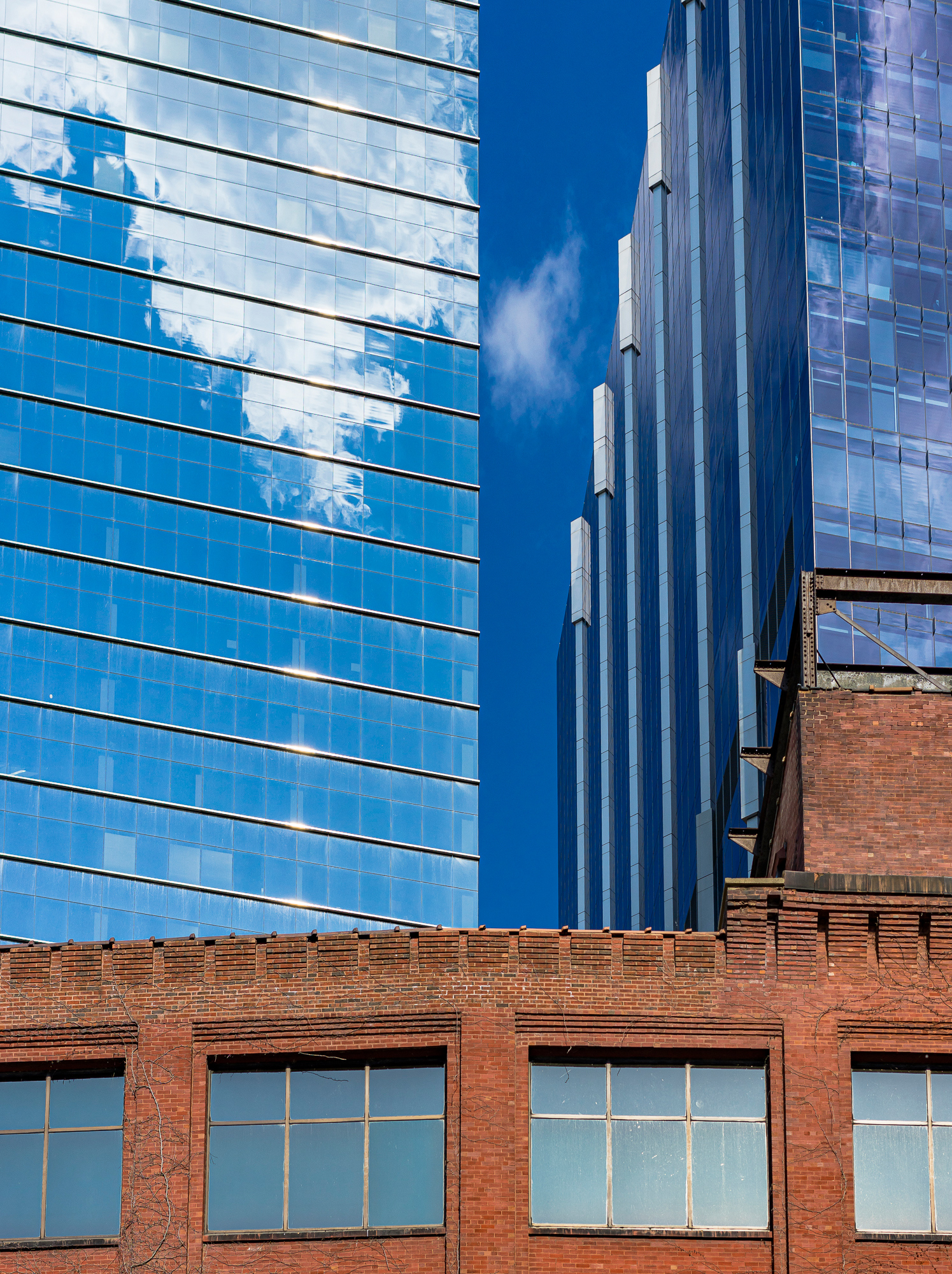
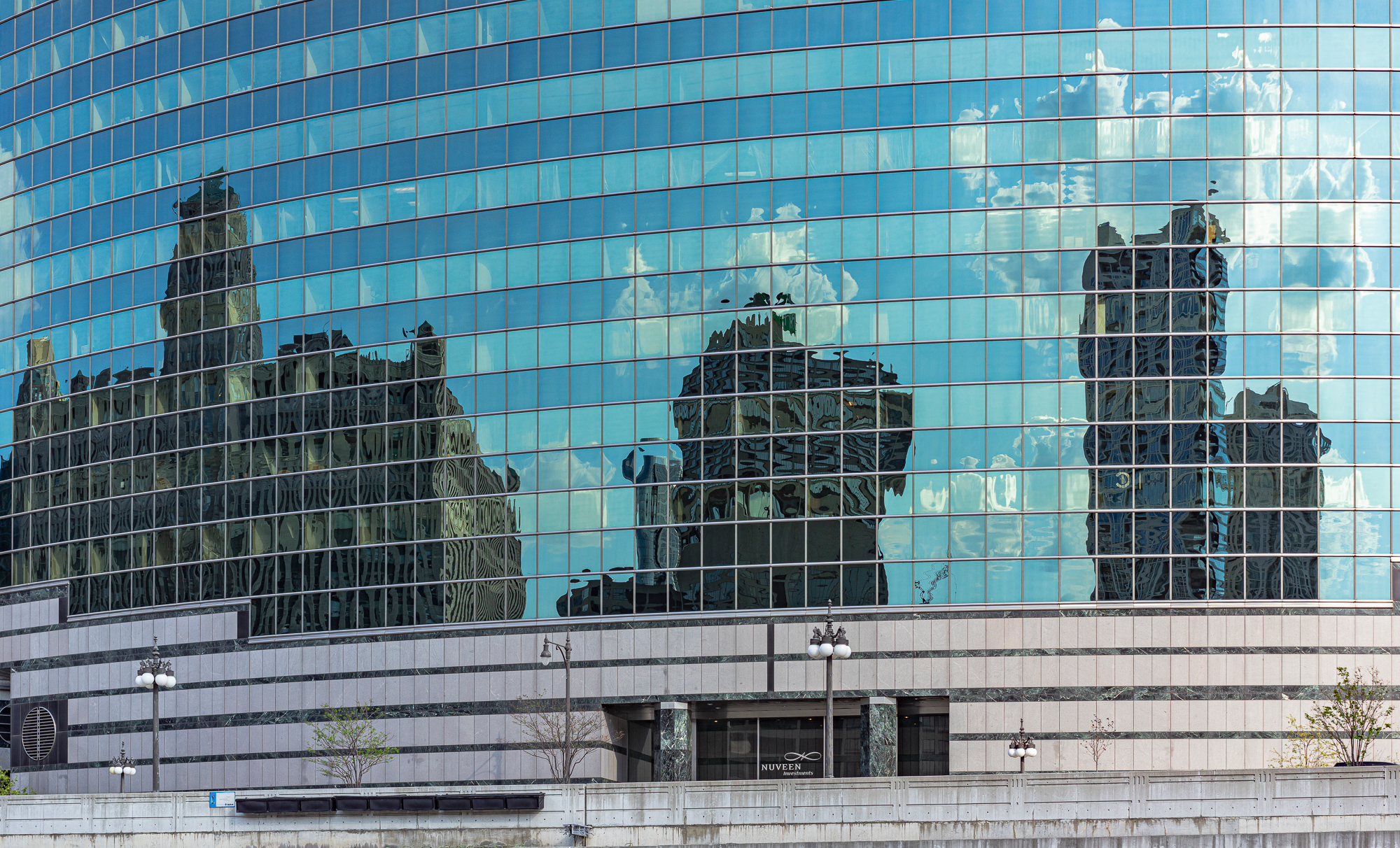
The next two images, taken in Santiago, Chile, feature a modern all-glass building that reflects opposing scenes but with an interesting twist. The first image was taken from a high vantage point in the hotel across the street and, therefore, caught a lower-angled reflection of the street scene.
The second image is of the same new building looking up from street level which reflected the upper part of the hotel across the way and the sky above it. Ongoing interior work in the new building is faintly visible through tinted windows and is not a reflection.
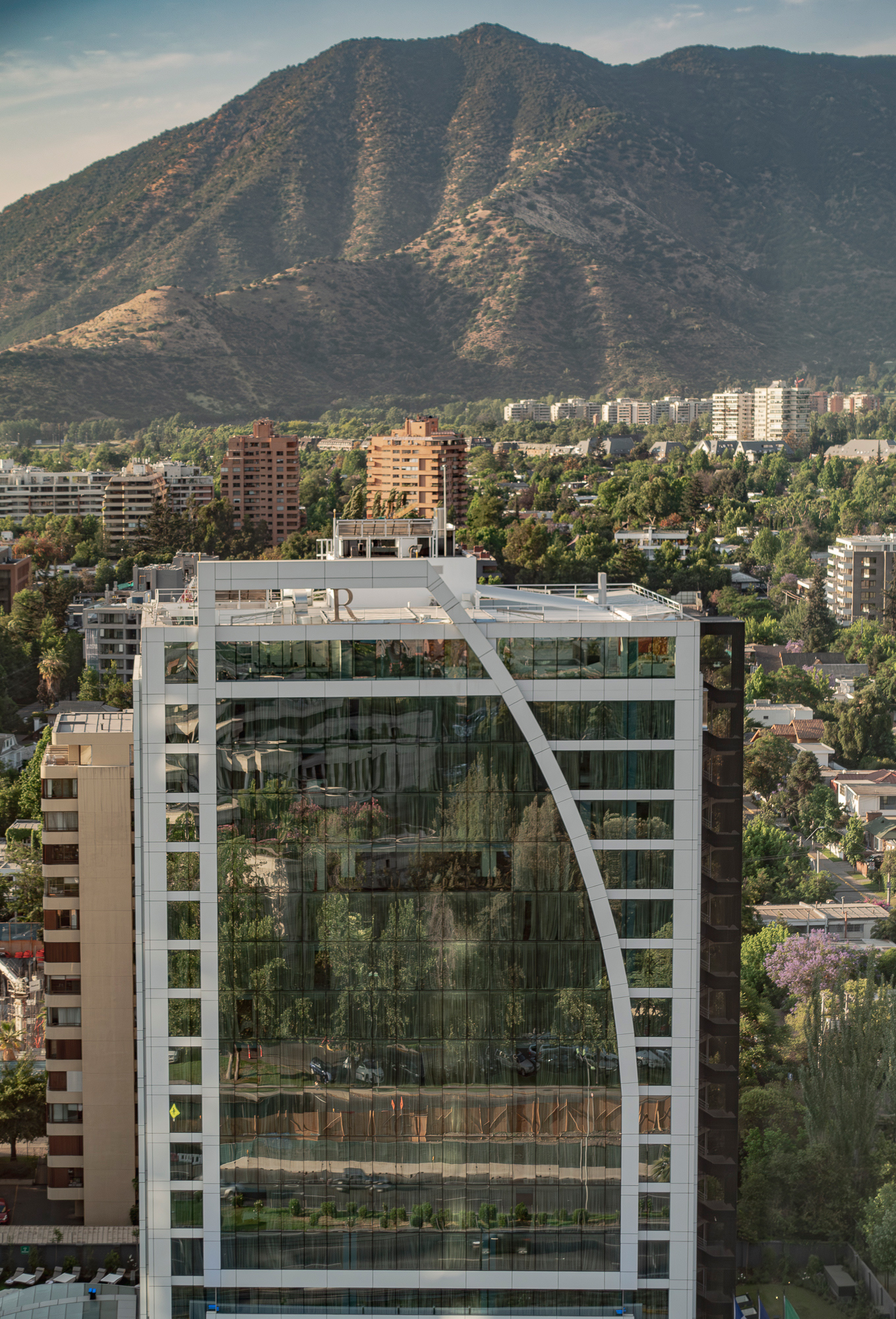
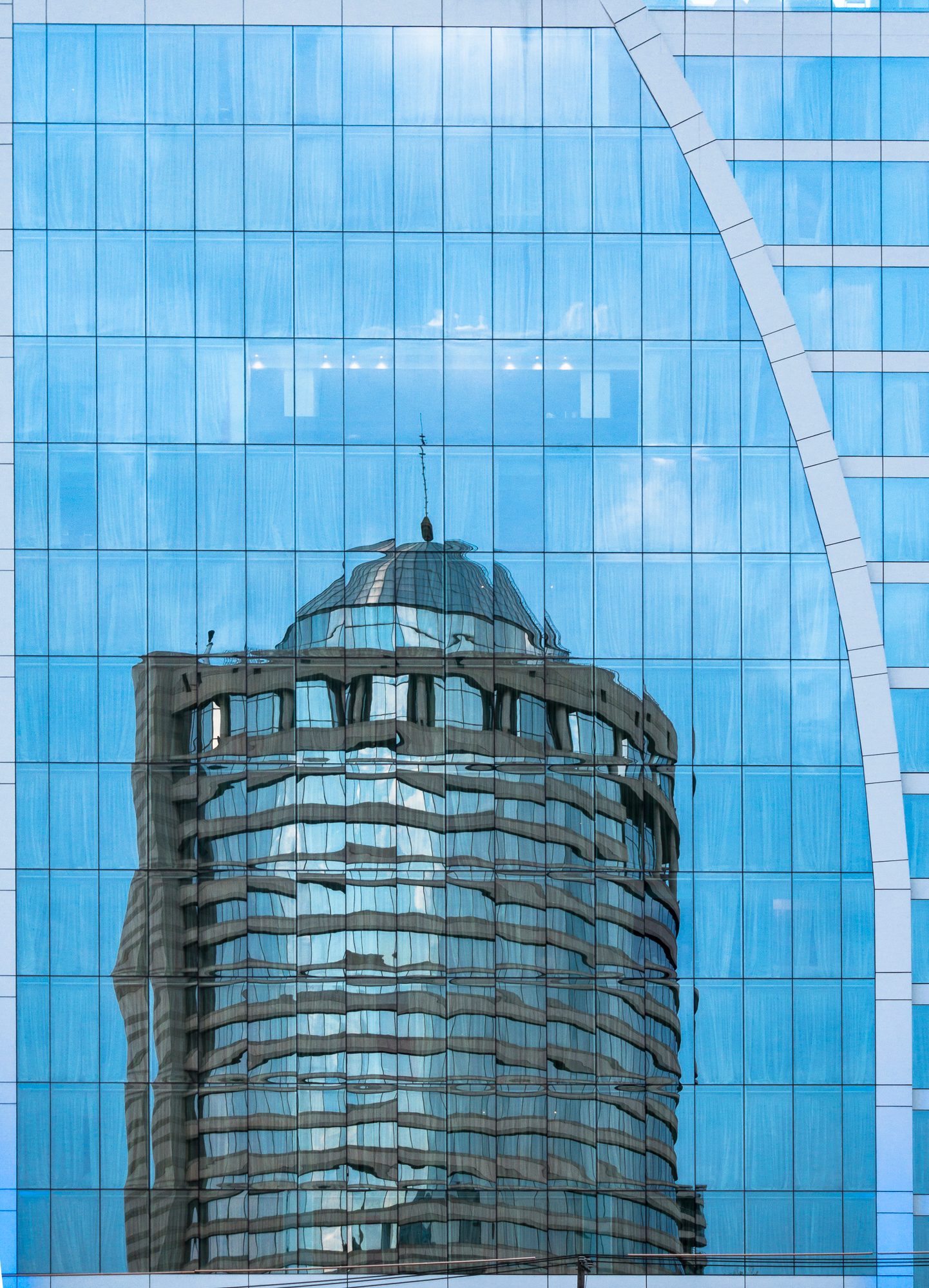
In the following image, an intermission during an Orange County Performing Arts Center performance allowed me to capture a vivid sunset above the Costa Mesa-CA Civic Center.
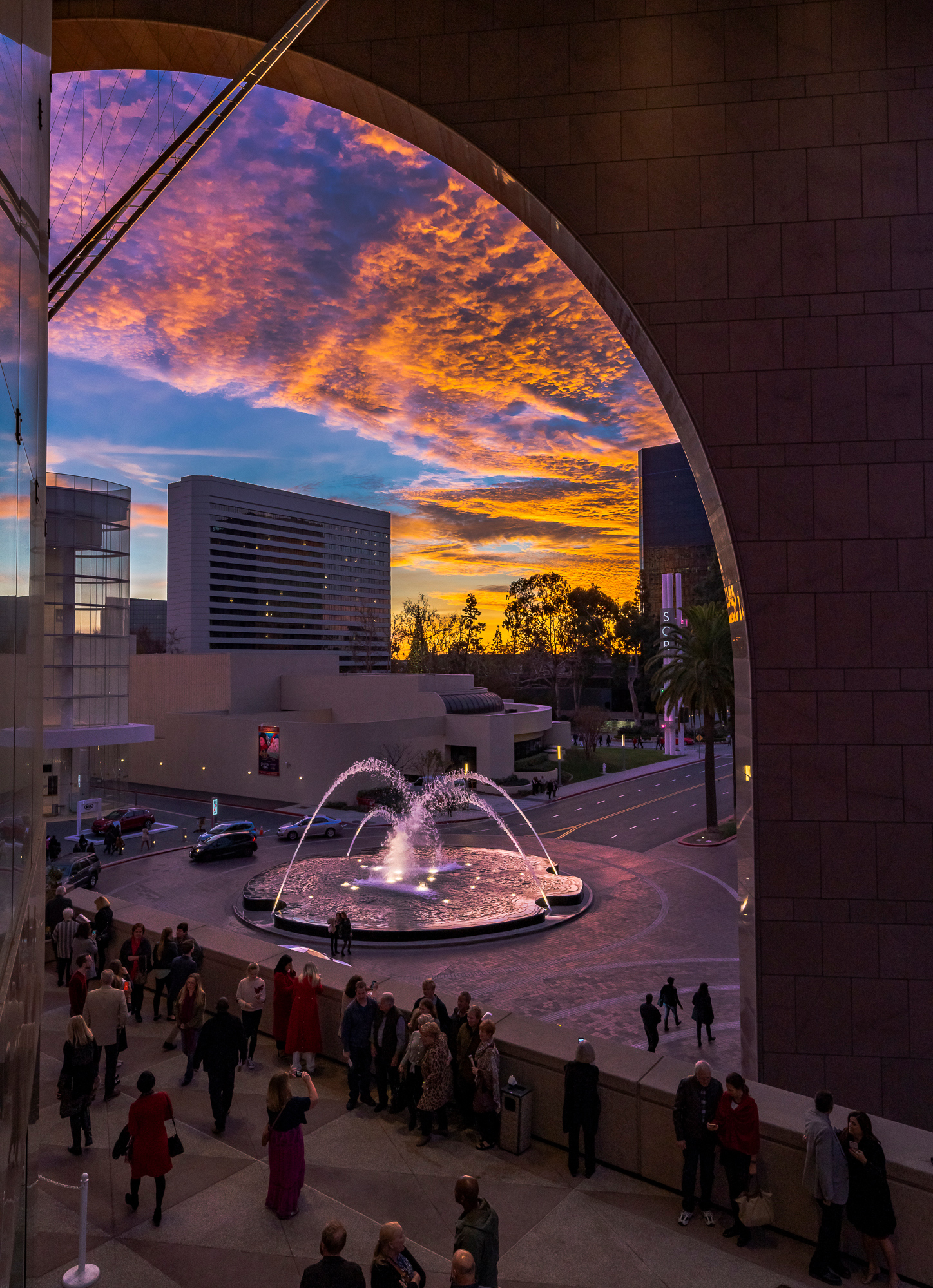
Switching back to Chicago, I was taken with the projection of the late afternoon sun from the closely packed windows of the building behind me. They looked like alien letters and words of warning, as shown in the following image.
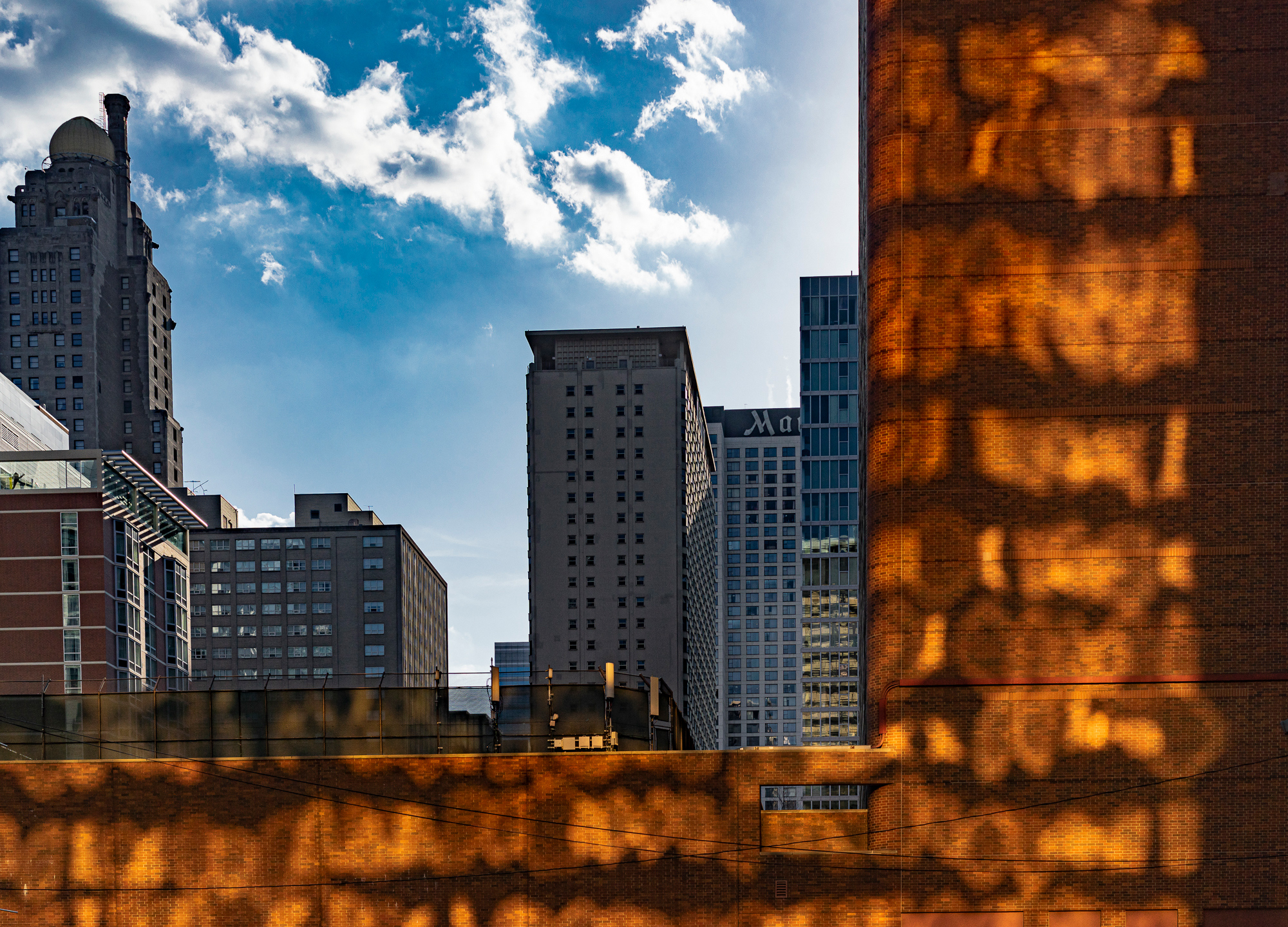
I wondered if anyone else had the same reaction. Then I noticed the billboard slightly to the right!
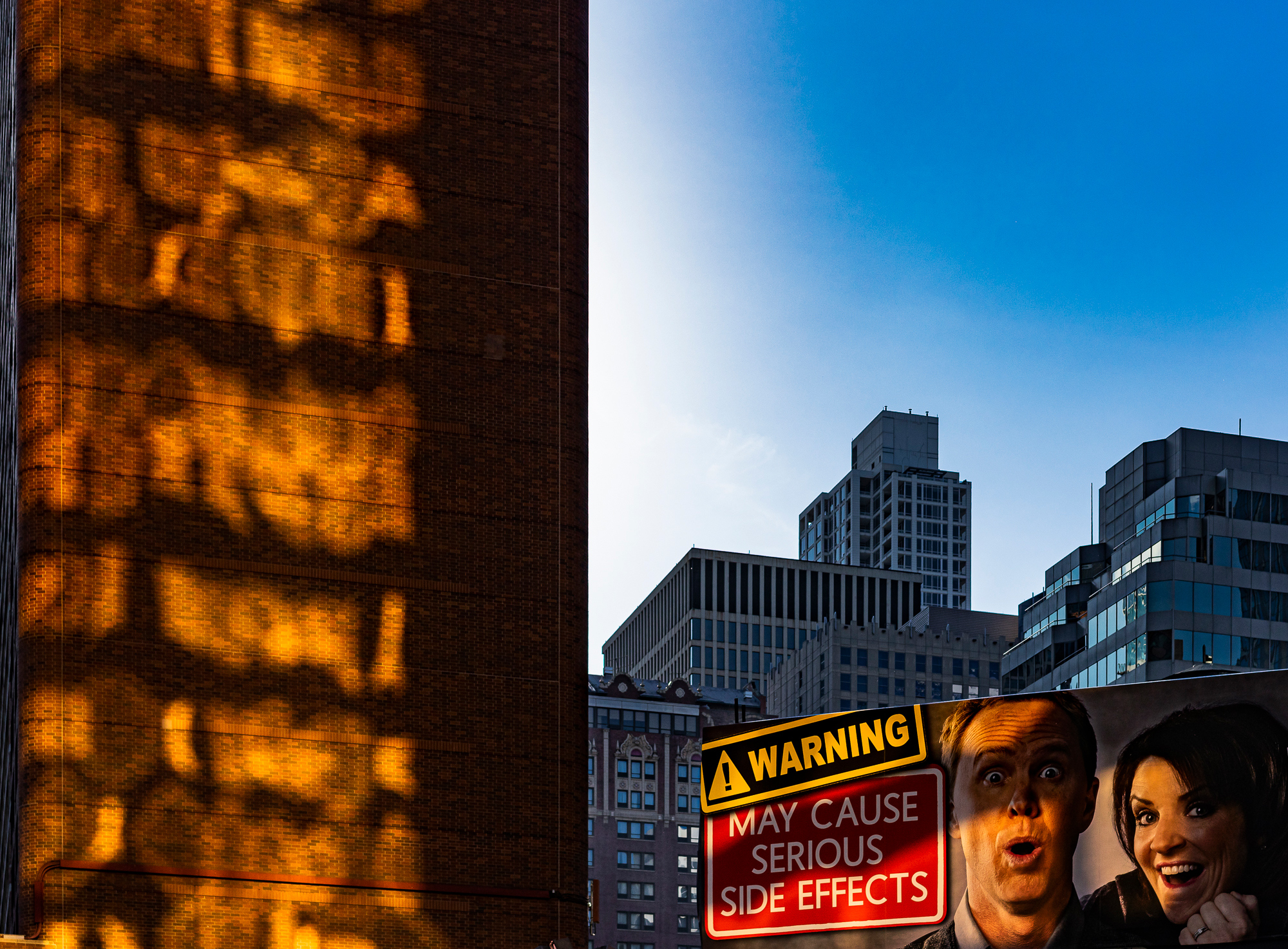
Capturing humor in urban scenes is a rare coup, particularly when it’s weird.
Speaking of weird, while revisiting the MIT campus during my Class of 1959’s 50th-year reunion, I came across this ultra-modern academic center known as Building 32. It was designed by Frank Gehry and completed for occupancy in 2004.

Though it looks like something from Alice in Wonderland, it stimulates the senses endlessly and seems to break every convention.
Obviously, large cities can be overstimulating, which made me wonder: Where do you go “to get away from it all” when a large, dense city becomes too much? I got my answer 20 minutes after my wife and I checked in at the Waldorf Astoria in Chicago in June 2014.
After the bellman showed us to our 30th-story room, Bobbie parted the curtains and then said, “Harvey, come take a look at this!”. Since she is my muse, and I have learned to always pay attention, I reflexively grabbed my camera and ran over to the window to capture this scene.
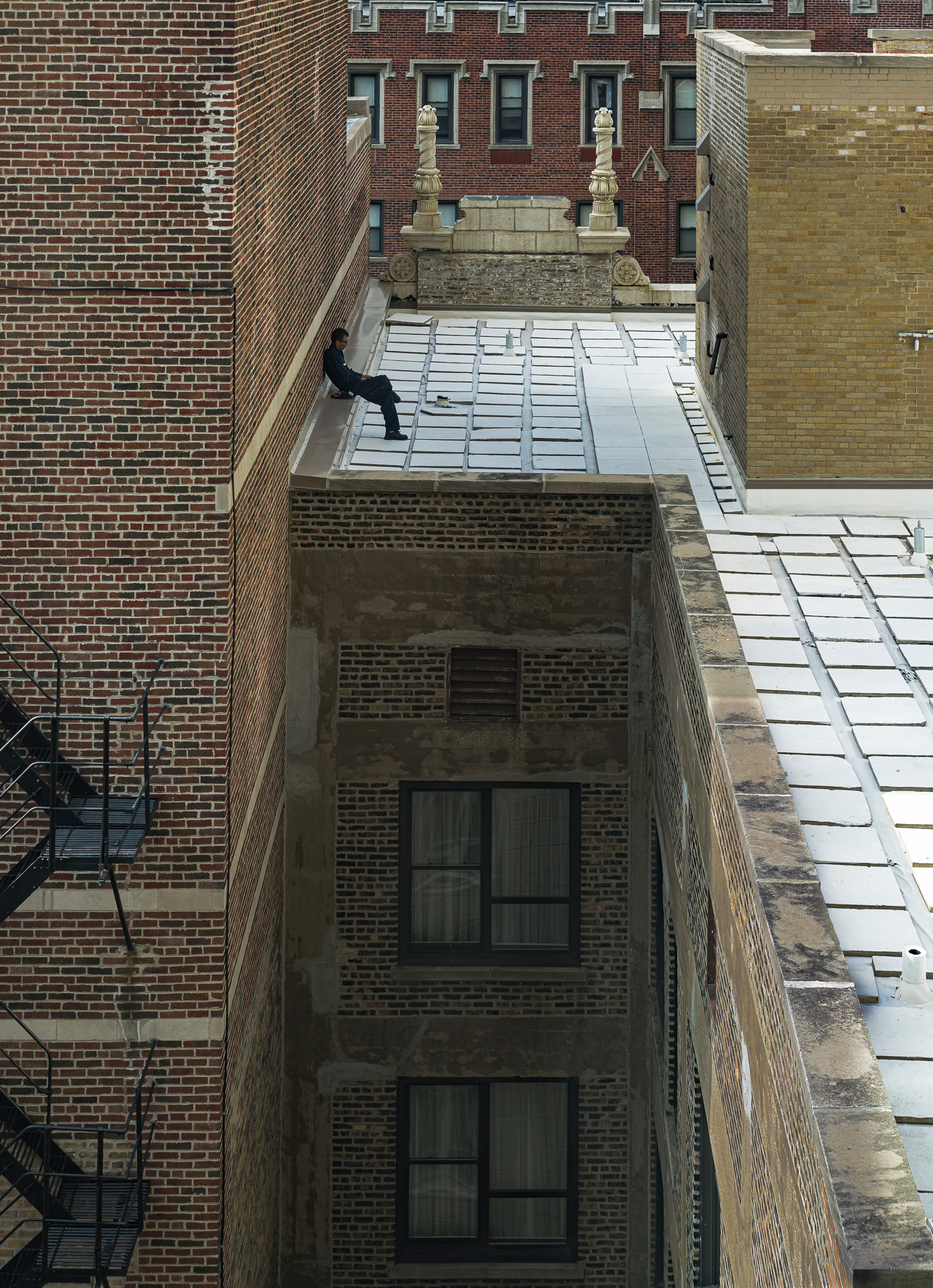
The answer to my question is, “You go up”. Of course! Traveling horizontally would take hours, particularly at rush hour. Going up takes a minute to be in your own little world… as long as you have no fear of heights. This young man looked like he really needed to clear his mind or at least grab a breath of reasonably fresh air.
Another point to make about unique architecture in large cities: It’s not necessarily restricted to large business and residential buildings. In Buenos Ares, Argentina, the great majority of buildings are older and traditional. But where architectural design is given the greatest license is in the Cementerio de la Recoleta, where many of Buenos Aires’ famous and wealthy citizens are interred after they’ve expired. However, who is to be buried there must be approved by a review board.
The story goes that although the Duarte family had a mausoleum there, Eva Duarte was too notorious to be admitted after she died. So, President Juan Peron bought a plot of land just outside the cemetery walls and built a large memorial and crypt for Eva’s final resting place. However, it’s more likely that Peron had to go outside the cemetery because there were no available plots large enough inside to contain what he had in mind for her memorial.
The next two images reveal unrestrained imaginations (and pocketbooks to match) that have created a miniature skyline with no equal.
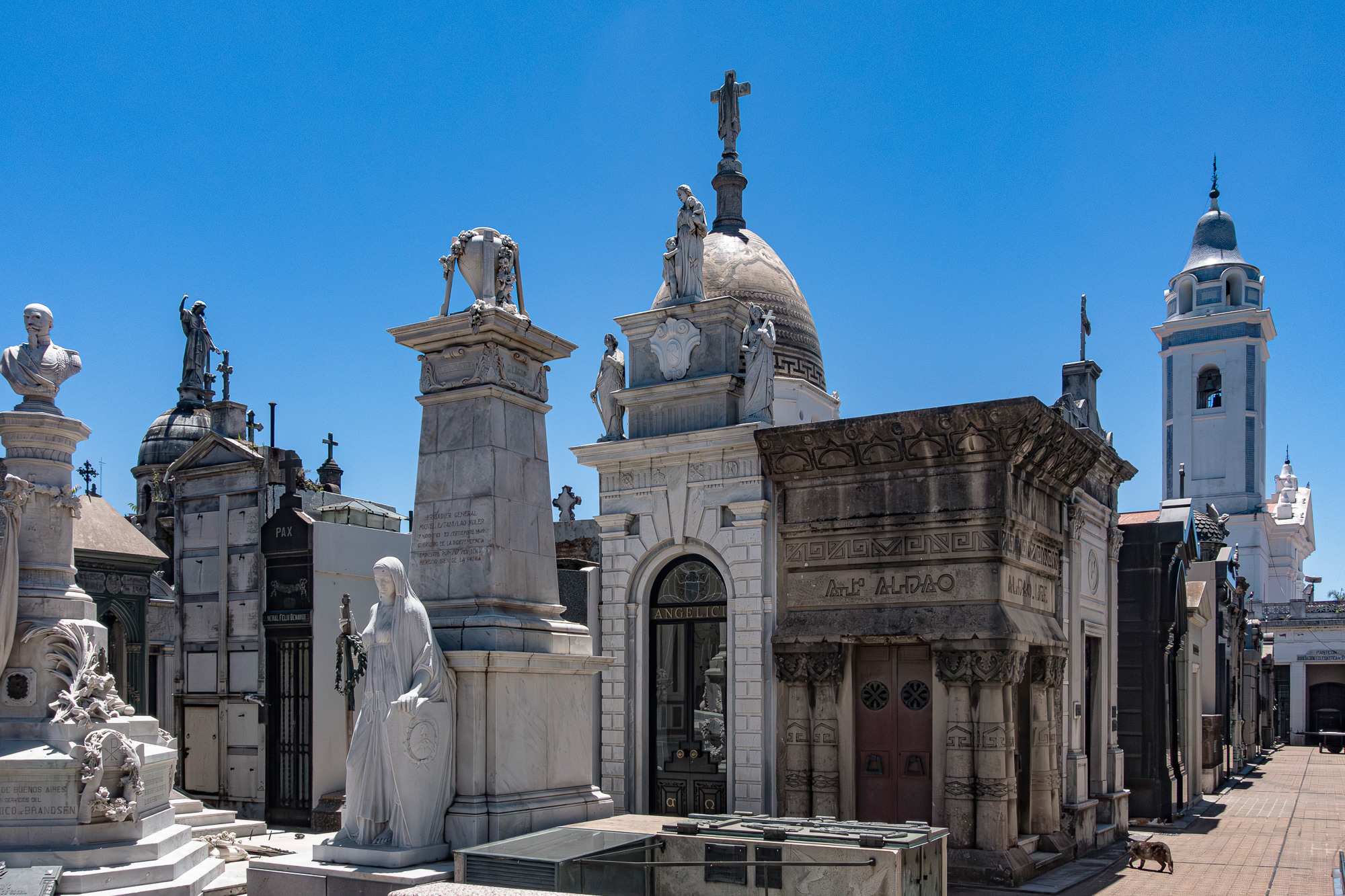
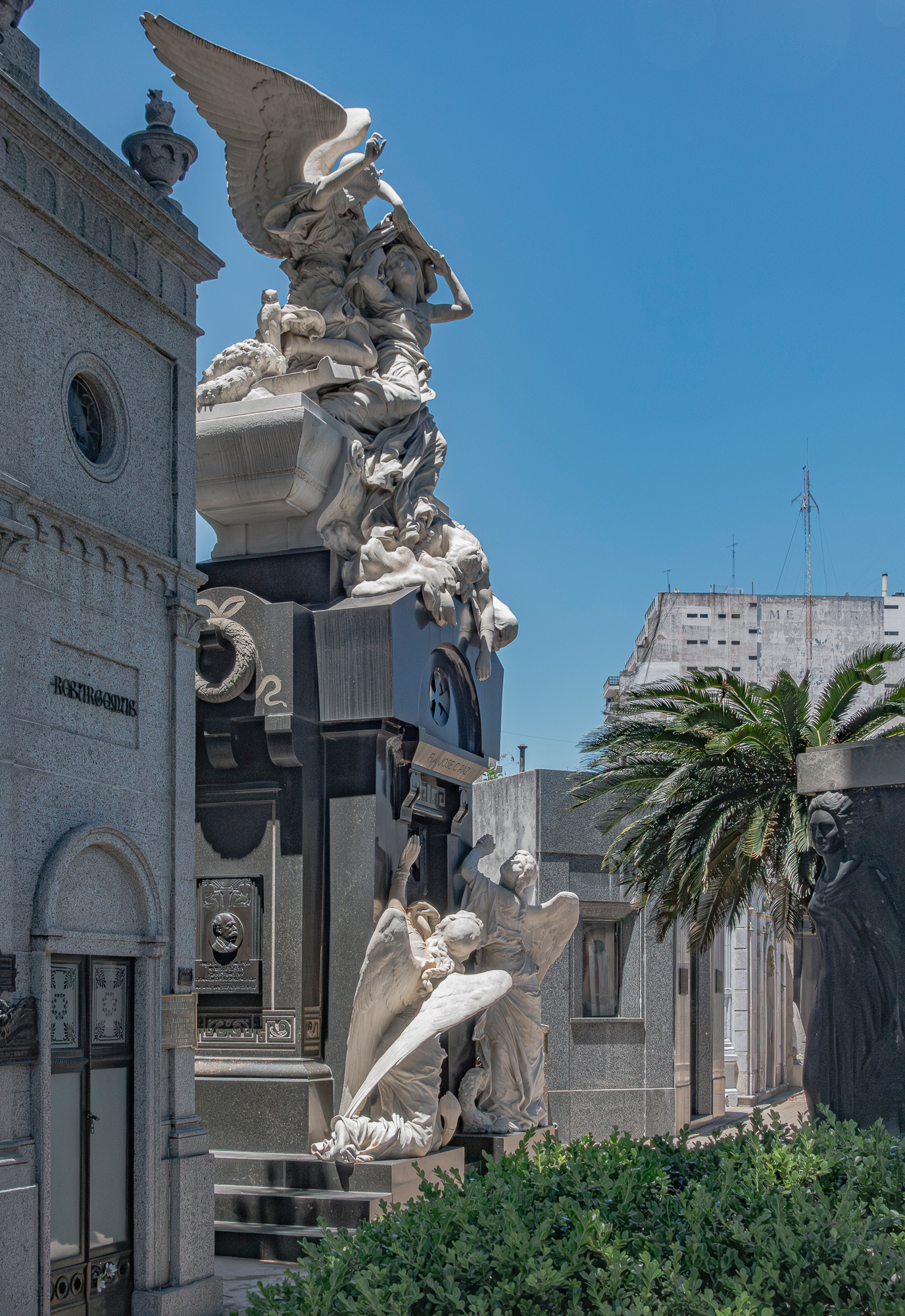
Following is the more modest but substantial family crypt belonging to the Duarte family. While Eva Peron is referenced at the entrance, she is interred just outside the cemetery walls.
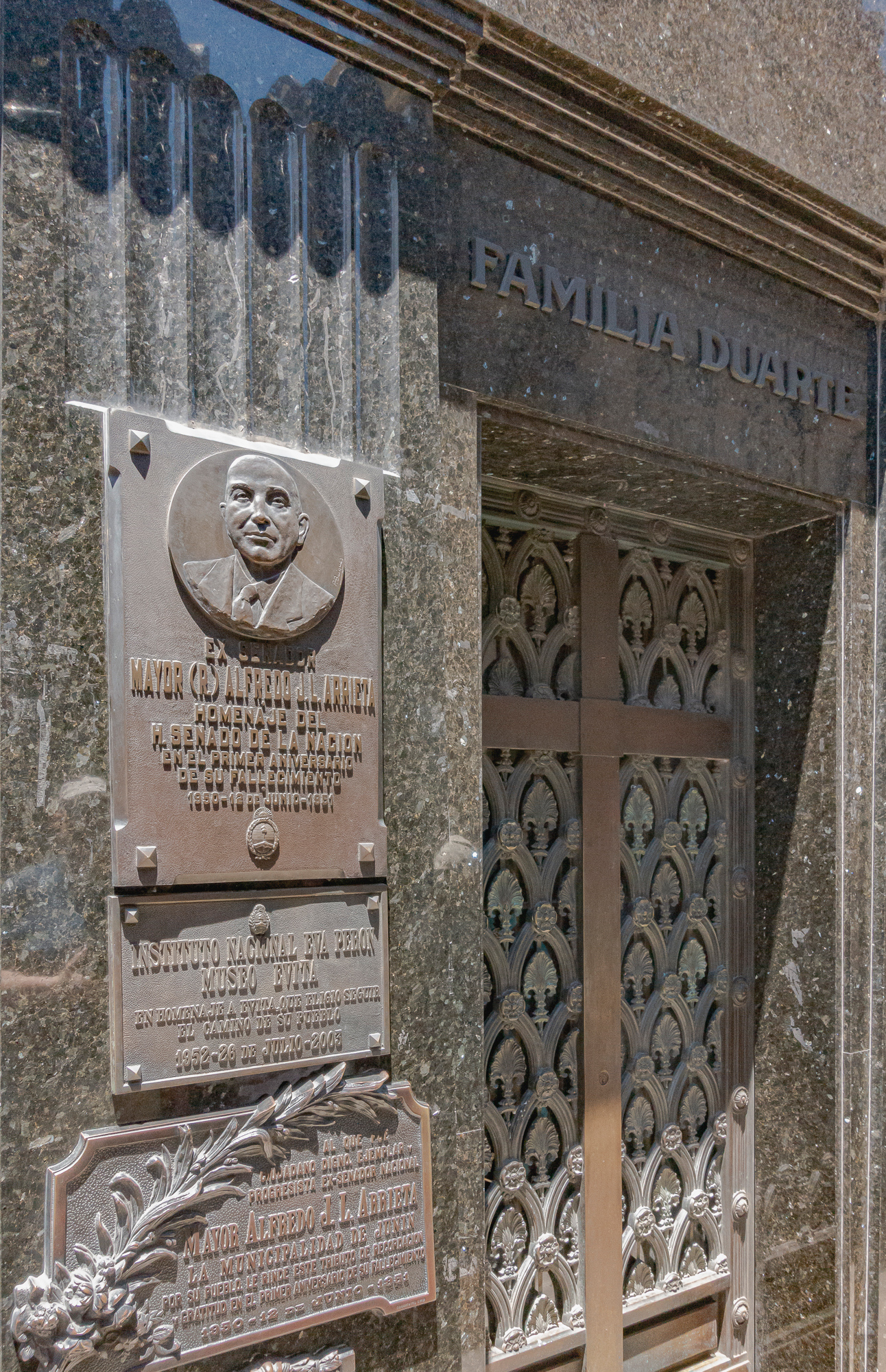
In north Little Rock, Arkansas, there is a popular tourist attraction known as the “Old Mill” in the T. R. Pugh Memorial Park. It’s design and construction suggest the early 1800’s, and the structure is on the National Registry of Historic Buildings.
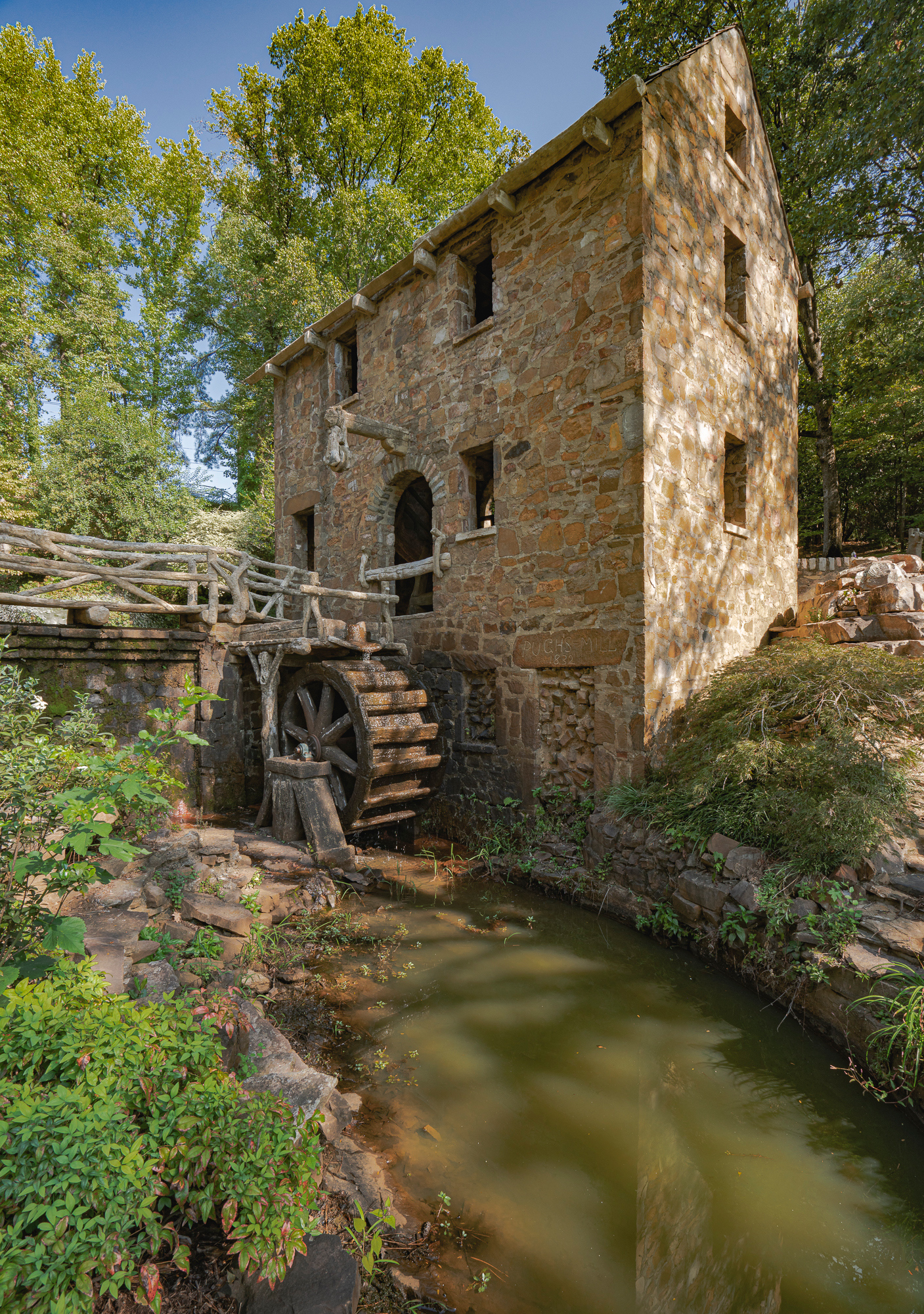
But it was built in 1933 by a local developer as part of a community park and is typical of old mills used in Arkansas in the early 1800s to grind grain. Its real claim to fame – and hence the National Registry designation – is that it was featured in the opening scene of the movie “Gone with the Wind”. In any case, it is a great reminder of a largely pastoral USA that prevailed 200 years ago.
The next image is of an old Victorian house that has been “modernized” to suit the 21st Century character of an old Colorado mining town.
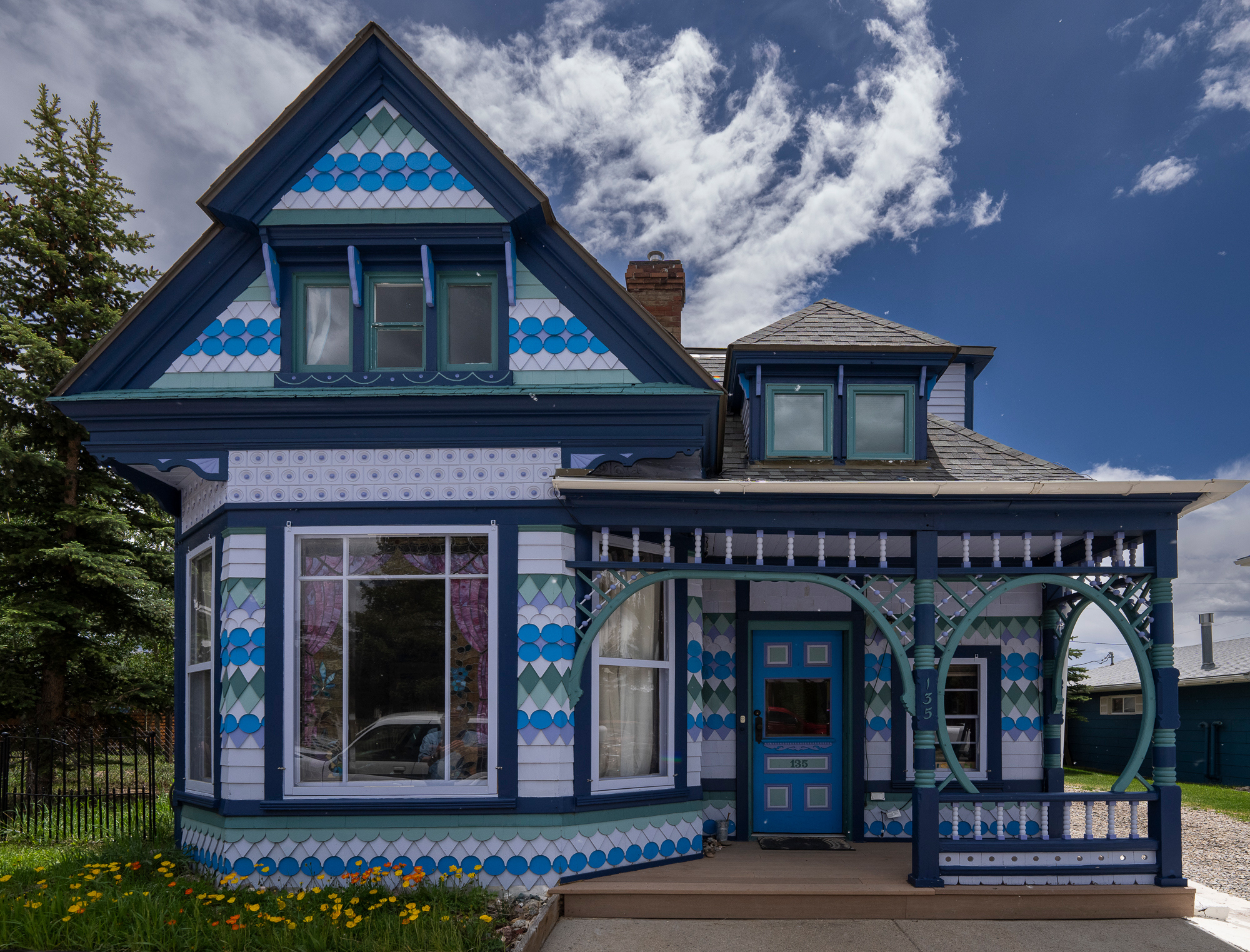
Its charm is undeniable. Leadville was settled in 1859 following the discovery of gold placer deposits in nearby mountain streams. The town got its name from nearby concentrations of silver and lead ore in a mineral form called Cerussite. Sand washing down from those veins clogged up the sluice boxes used to pan gold, which frustrated the gold miners who gave the town what they considered to be a disparaging name. The irony is that the town prospered from lead ore mining and continues to prosper as a major tourism center.
Leadville is Lake County’s only incorporated city as well as the county seat. At 10,152 feet, it is North America’s highest city and is surrounded by 13,000-foot and 14,000-foot peaks.
For a change of pace, the next image is of the original walled city of Dubrovnik, Croatia, which traces its origins back to the seventh century. Known for its bright orange tile roofs, this jewel of a city contrasts beautifully with the vibrant blue color of the eastern Mediterranean Sea along the Adriatic Coast.
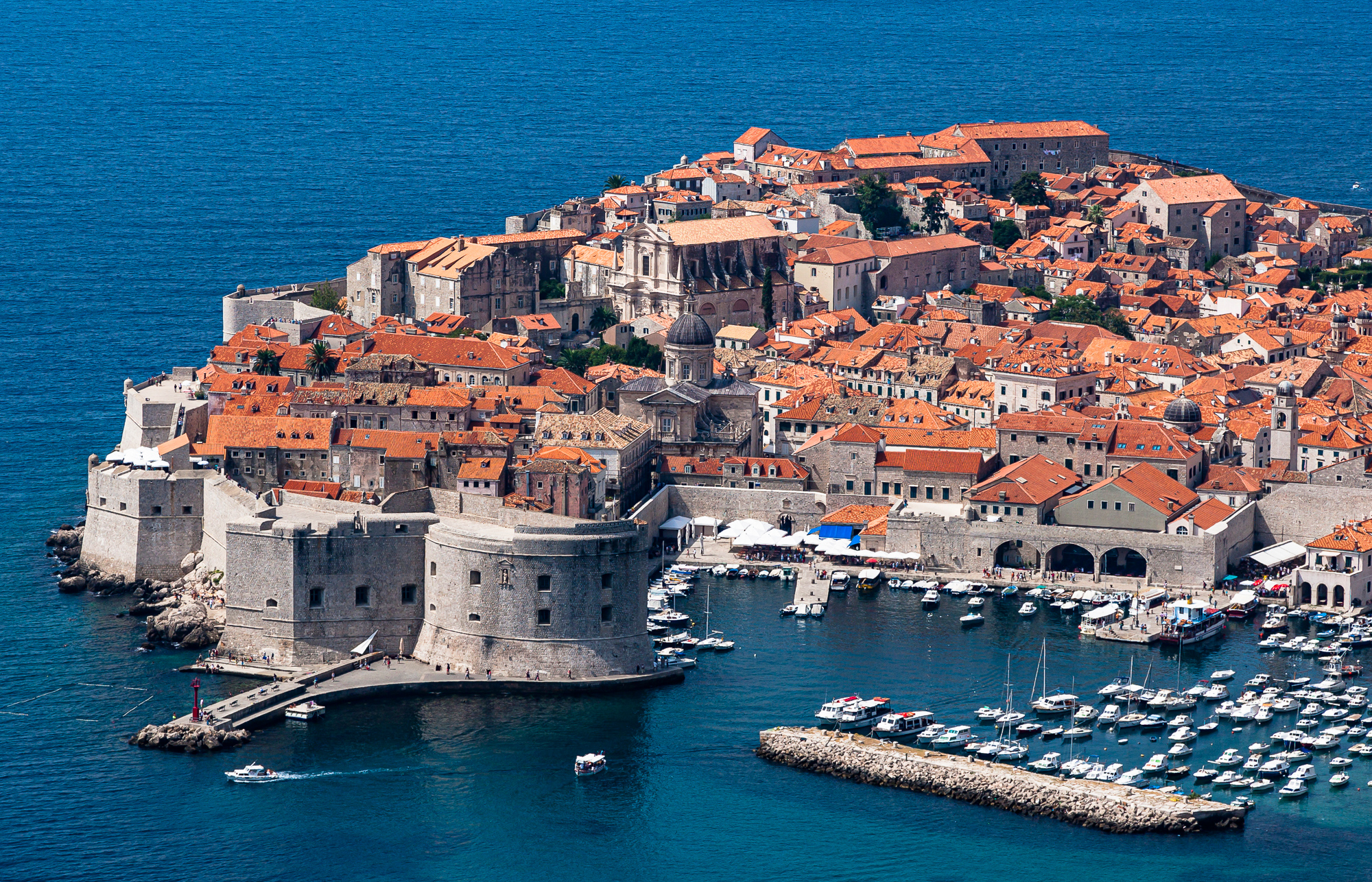
The charm of the centuries-old stone buildings and cobble streets make Dubrovnik
one of the most visited European destinations. It is challenging to make a less-than-beautiful photograph of Dubrovnik from a high mainland perspective.
The next two images were taken in the historic part of Colonia del Sacramento, a UNESCO World Heritage site and the oldest settlement in Uruguay. It was colonized by Portugal in 1680, and then captured by Spain, who expelled all Portuguese residents. The settlement changed hands between the two countries multiple times during a succession of wars until it became part of Uruguay. The original Portuguese stone buildings and streets paved with shale are well preserved.
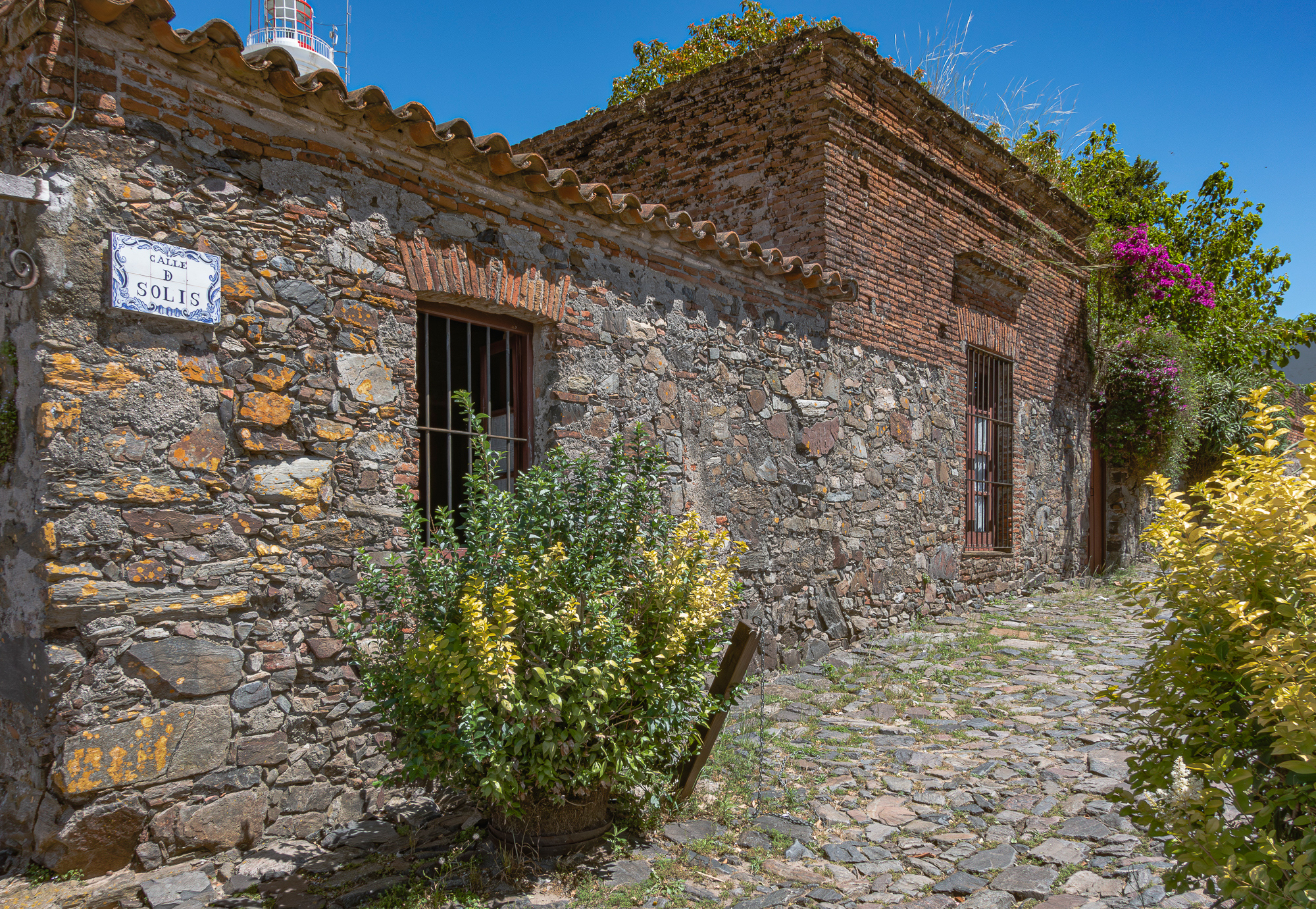
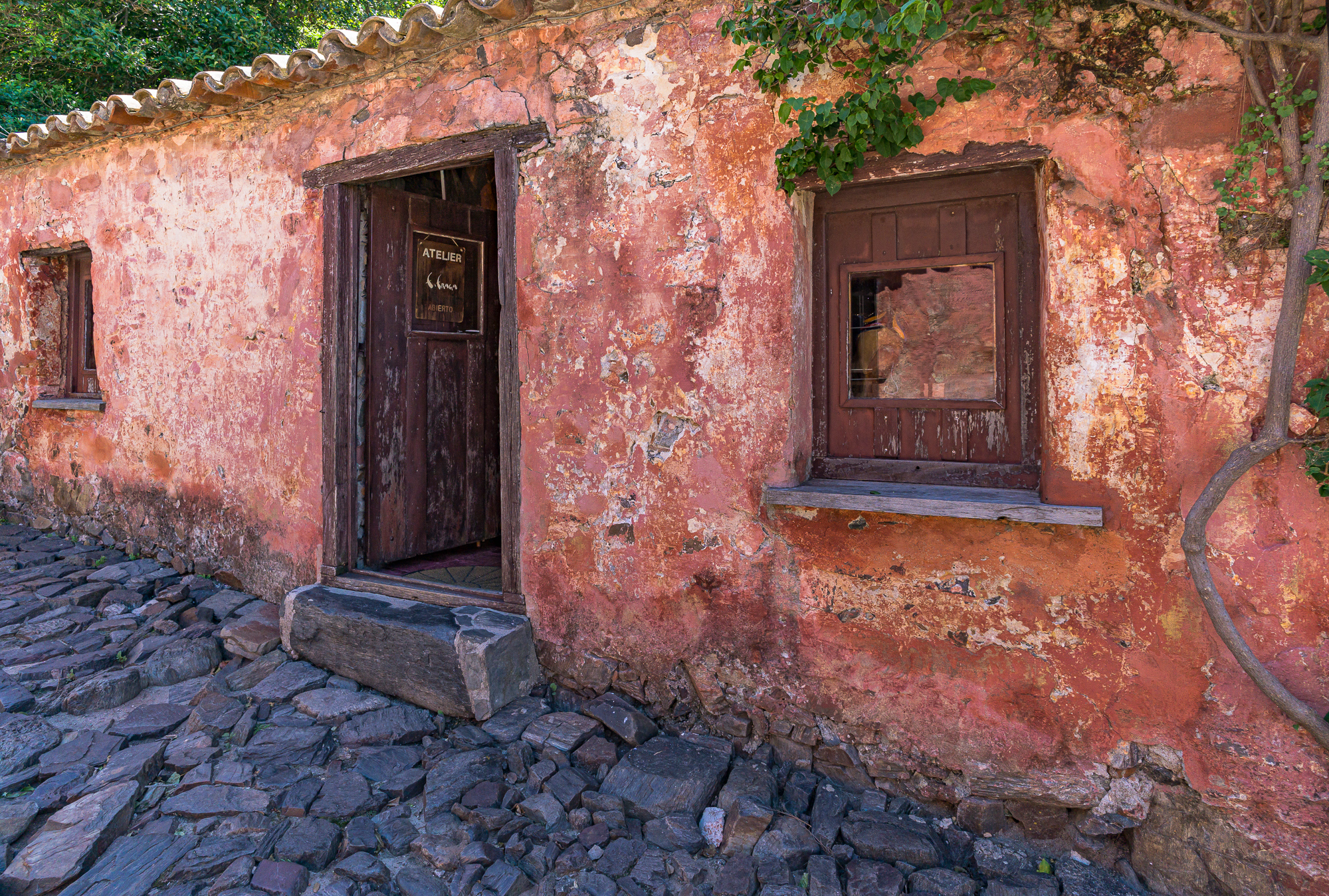
The Library of Celsus was built 2000 years ago by Ancient Rome in what is now Ephesus, Turkey. Limited by lot size, it is a small building clad in marble that was designed to look larger. It is also one of the most beautiful buildings in the world, even allowing for 2000 years of weathering. As one of the most popular tourist sites in Europe, it is impossible to photograph it without dozens or more visitors in the picture. In any case, I thought it better to take a close-up of an upper portion of the building that shows detail and texture, and which also avoids the crowds.
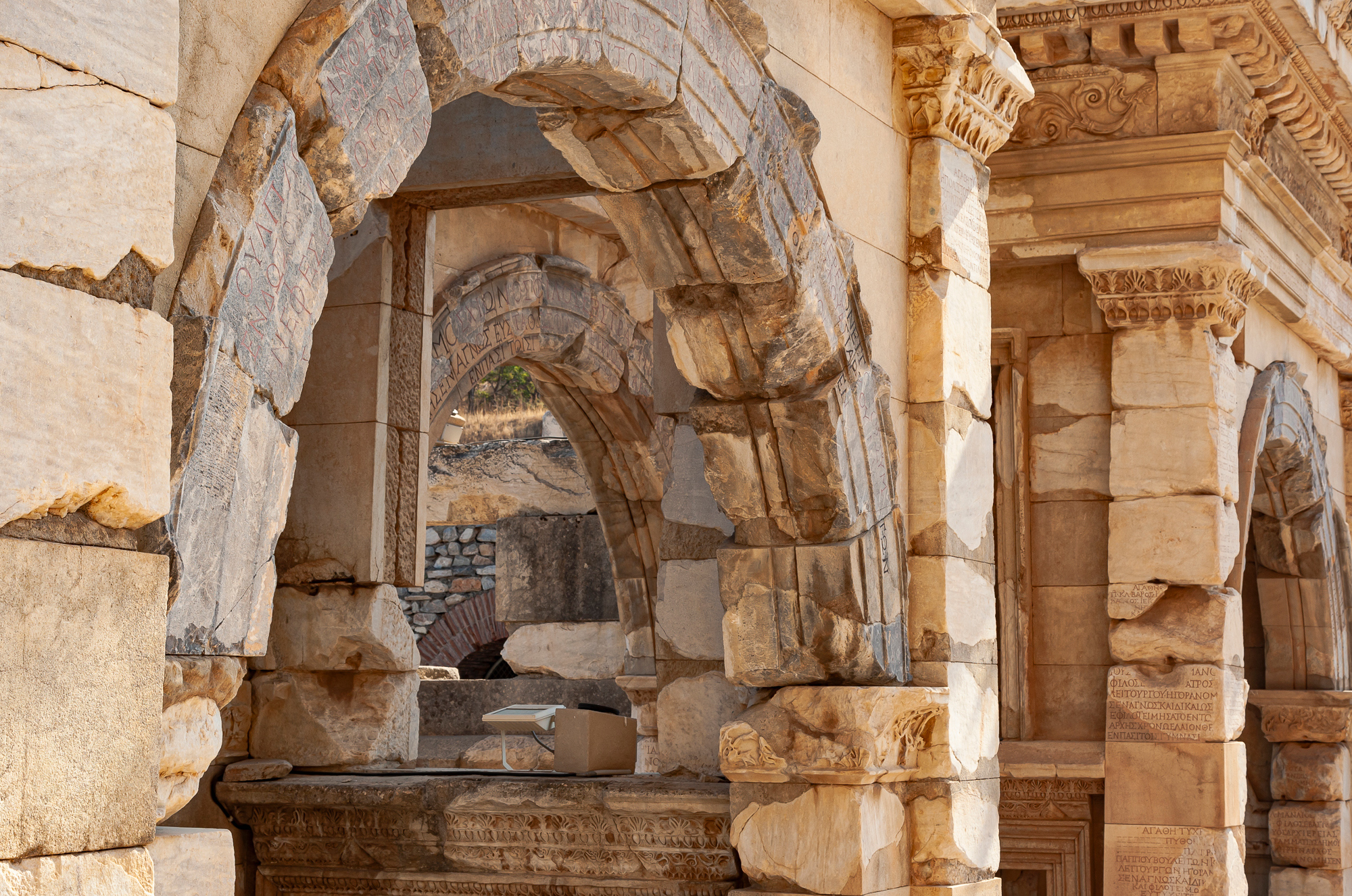
Anyone who has ever visited or planned a tour of Iceland has the Harpa Music Center in Reykjavik on their itinerary. The building’s dramatic rectangular planes filled with glass windows are reminiscent of the sails on Viking ships. It has been photographed by just about every one of the millions of visiting tourists.
Of course, I did the same. But what intrigued me most were the interior ceilings composed of three-dimensional hexagonal mirrored projections that reflected different images every time I moved. The following images capture parts of that. However, It’s a poor substitute for the actual experience.
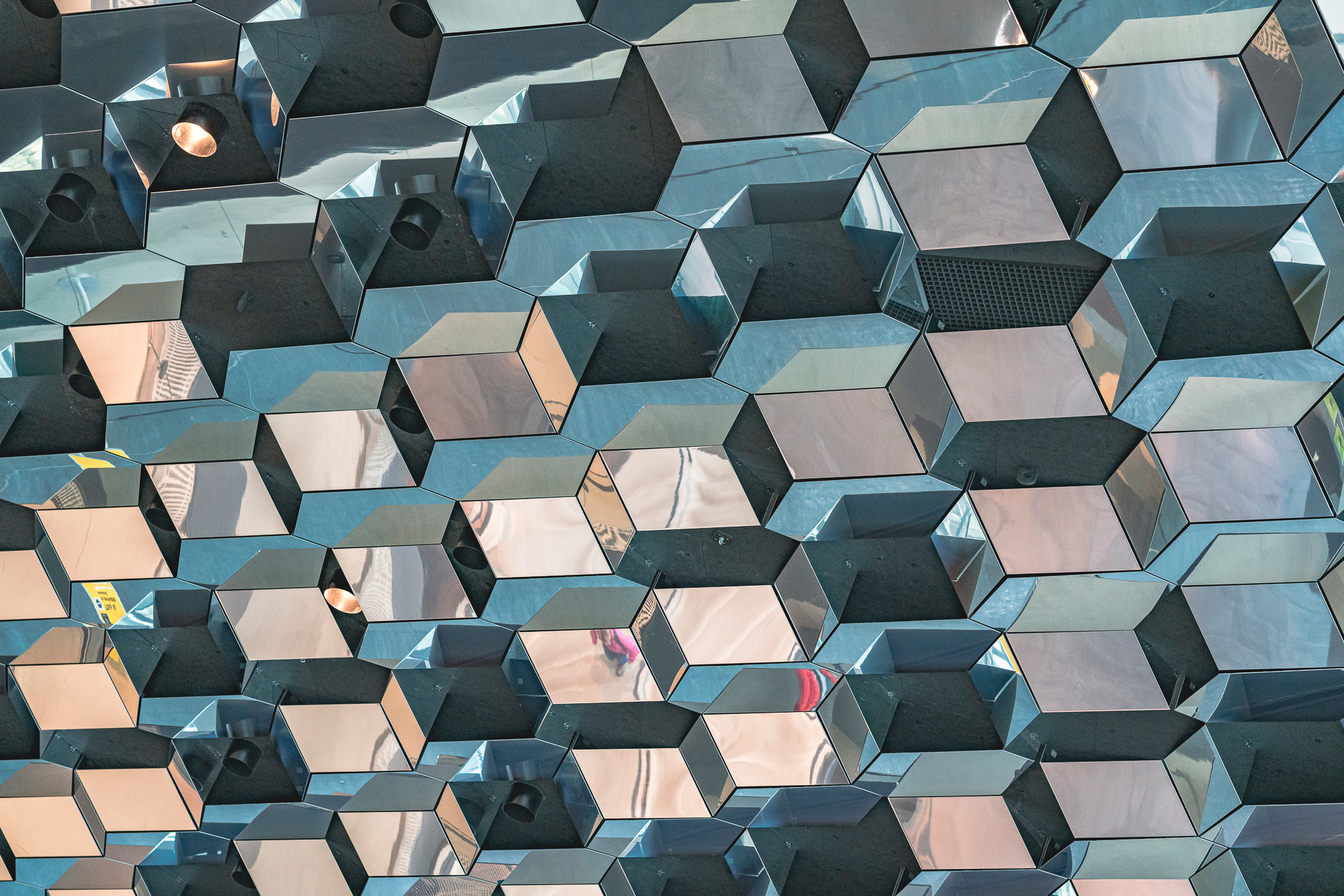
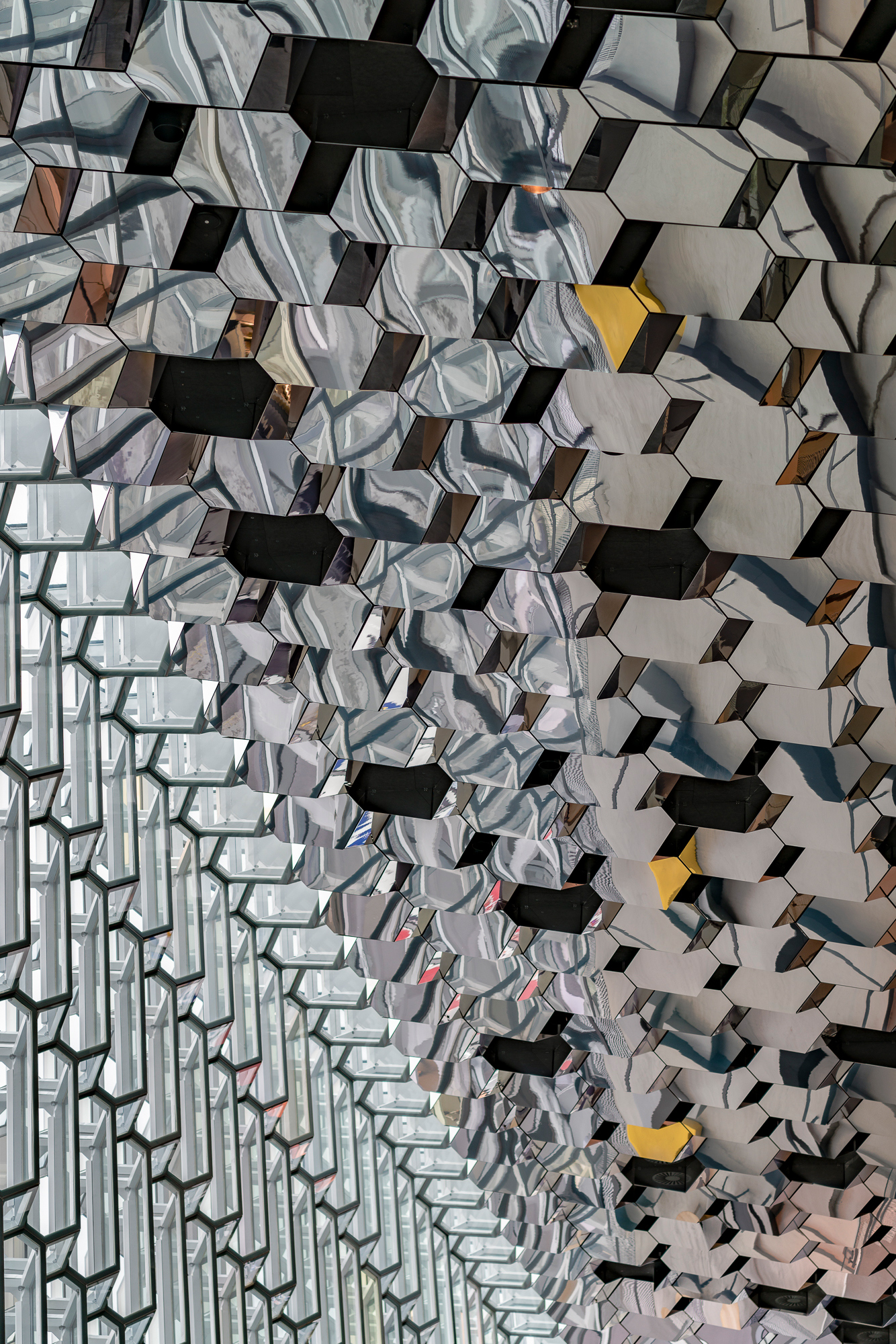
The next image was not taken in an actual city but in a 5-acre demonstration project named Arco Santi that promised to provide cost-effective housing and community buildings on inexpensive desert land using cheaper but durable building materials like concrete made from local desert soils. This project was designed and built by Italian architect Pablo Soleri, who believed that traditional urban development is wasteful of land needed for higher economic purpose.
Arco Santi never met its expectations, though some of the ideas may still have merit. I took the following image from an indoor/outdoor assembly area in Arco Santi. Though the perspective is simple, it did seem to have a futuristic ambiance.
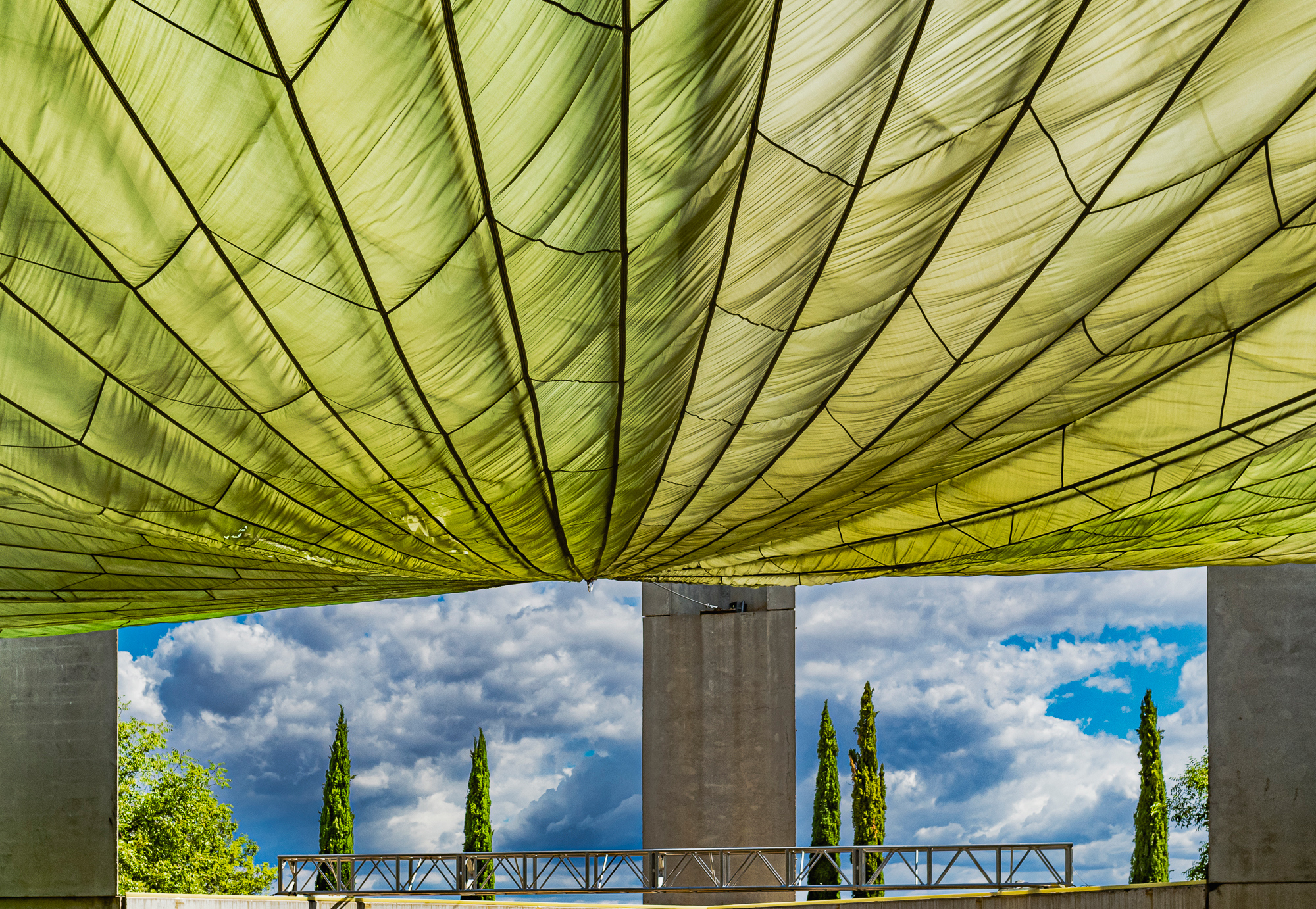
There is no reason why a night sky image couldn’t be a cityscape. This last image is a composite of six images in order to capture the movement of the USA Space Station as it flew over the City of Sedona. Also captured were the blinking light streaks of four airplanes. Sedona is a small city of 10,000 people in the heart of red rock country, as the rock formations overlooking the town demonstrate.
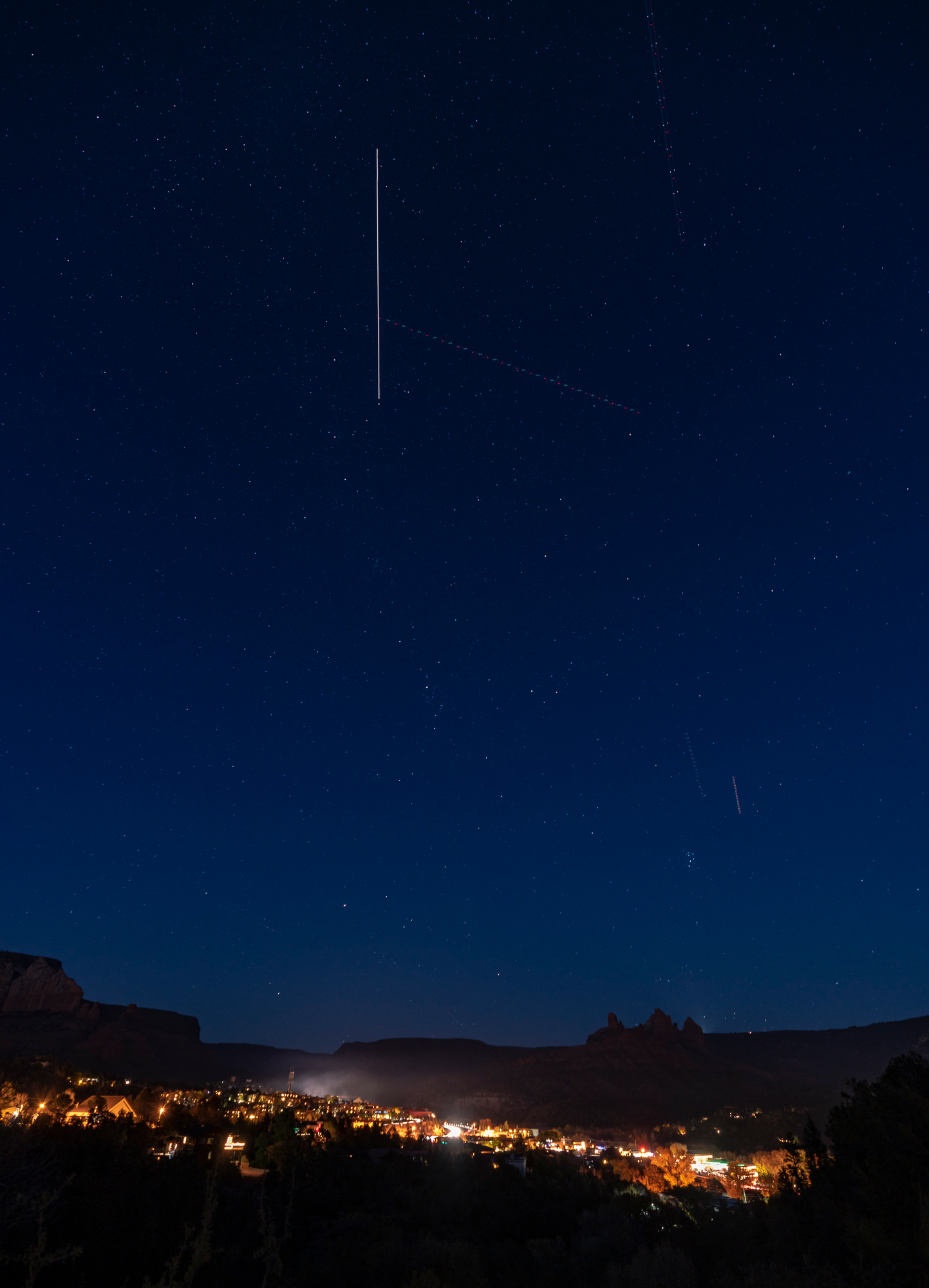
The next article in this series will explore how adjacency to bodies of water makes cities more photogenic. Please return for Cityscapes Part II: Coastal & River Cities.
Harvey Stearn
November 2023
Sedona, AZ
To see the scope and essence of Harvey Stearn's photographic art please visit www.CameraStops.com. Mr. Stearn began photographing Western landscapes and wildlife at the age of 13, spent 50 years pursuing his passion in the field and in the darkroom before fully converting to digital photography in 2002. He developed color prints as well as monochrome, but switched over to digital capture and editing in 2002. Though he was a top executive for two large scale land development and home building corporations, he always found time for his fine art photography which won many awards. His work was exhibited in art museums in Southern California and Arizona, and was also featured in billboard advertisements and published in magazines. Mr. Stearn served on the California Arts Council for nine years, including two years as Chairman and another two as Vice Chairman. In addition, he was the founding Chairman of the John Wayne Airport Arts Commission in Orange County, California. Mr. Stearn’s work was sold through Arizona galleries for 15 years. In recent years he wrote 33 illustrated articles for PhotoPXL.com and 14 articles for Luminous-Landscape.com. In 2013 he published a book entitled “In Search of the Old West” which has been widely acclaimed. He was a guest lecturer on photography on a cruise ship visiting Chile, Argentina, Uruguay and the Falkland Islands. His work was among the top 100 images printed in NANPA's Showcase publications in 2019 and 2020. Images have been edited and selected for two new books on Landscape photography which will be published in late 2024 and early 2025.






